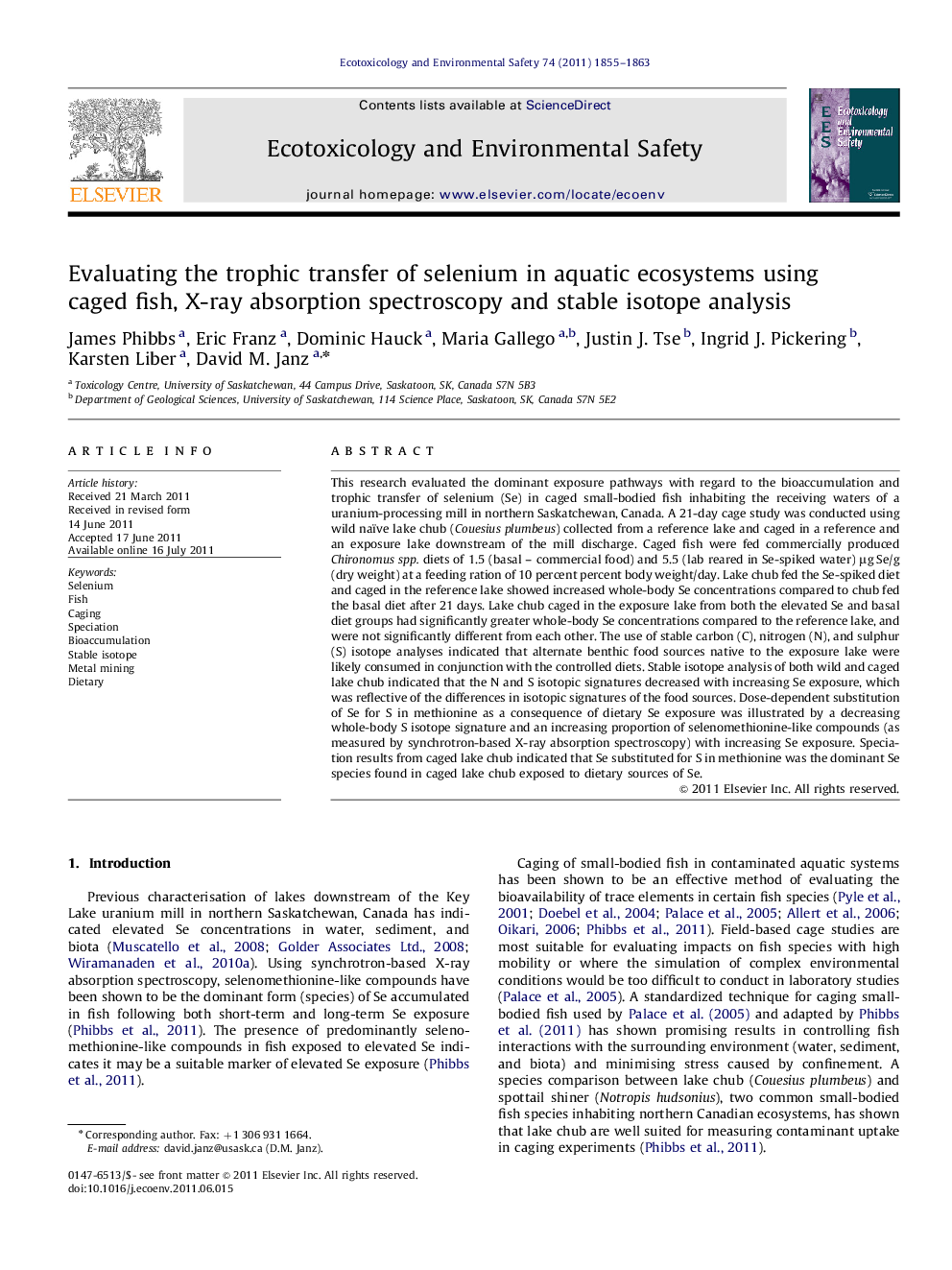| کد مقاله | کد نشریه | سال انتشار | مقاله انگلیسی | نسخه تمام متن |
|---|---|---|---|---|
| 4421242 | 1308508 | 2011 | 9 صفحه PDF | دانلود رایگان |

This research evaluated the dominant exposure pathways with regard to the bioaccumulation and trophic transfer of selenium (Se) in caged small-bodied fish inhabiting the receiving waters of a uranium-processing mill in northern Saskatchewan, Canada. A 21-day cage study was conducted using wild naïve lake chub (Couesius plumbeus) collected from a reference lake and caged in a reference and an exposure lake downstream of the mill discharge. Caged fish were fed commercially produced Chironomus spp. diets of 1.5 (basal – commercial food) and 5.5 (lab reared in Se-spiked water) μg Se/g (dry weight) at a feeding ration of 10 percent percent body weight/day. Lake chub fed the Se-spiked diet and caged in the reference lake showed increased whole-body Se concentrations compared to chub fed the basal diet after 21 days. Lake chub caged in the exposure lake from both the elevated Se and basal diet groups had significantly greater whole-body Se concentrations compared to the reference lake, and were not significantly different from each other. The use of stable carbon (C), nitrogen (N), and sulphur (S) isotope analyses indicated that alternate benthic food sources native to the exposure lake were likely consumed in conjunction with the controlled diets. Stable isotope analysis of both wild and caged lake chub indicated that the N and S isotopic signatures decreased with increasing Se exposure, which was reflective of the differences in isotopic signatures of the food sources. Dose-dependent substitution of Se for S in methionine as a consequence of dietary Se exposure was illustrated by a decreasing whole-body S isotope signature and an increasing proportion of selenomethionine-like compounds (as measured by synchrotron-based X-ray absorption spectroscopy) with increasing Se exposure. Speciation results from caged lake chub indicated that Se substituted for S in methionine was the dominant Se species found in caged lake chub exposed to dietary sources of Se.
► Naïve fish caged for 21 days accumulated significantly elevated Se concentrations.
► Speciation analysis revealed that the dominant form of Se in fish was selenomethionine.
► Stable isotope analyses indicated that Se accumulation was derived from controlled and native diets.
► Lake chub are a suitable fish species for conducting in situ cage studies.
Journal: Ecotoxicology and Environmental Safety - Volume 74, Issue 7, October 2011, Pages 1855–1863